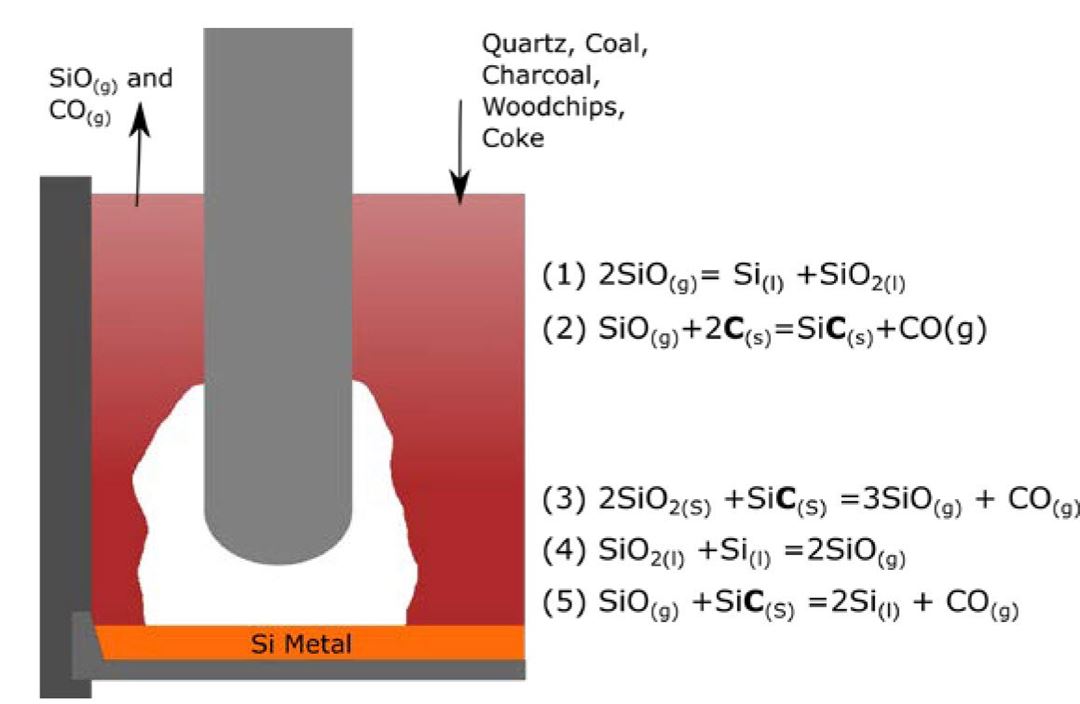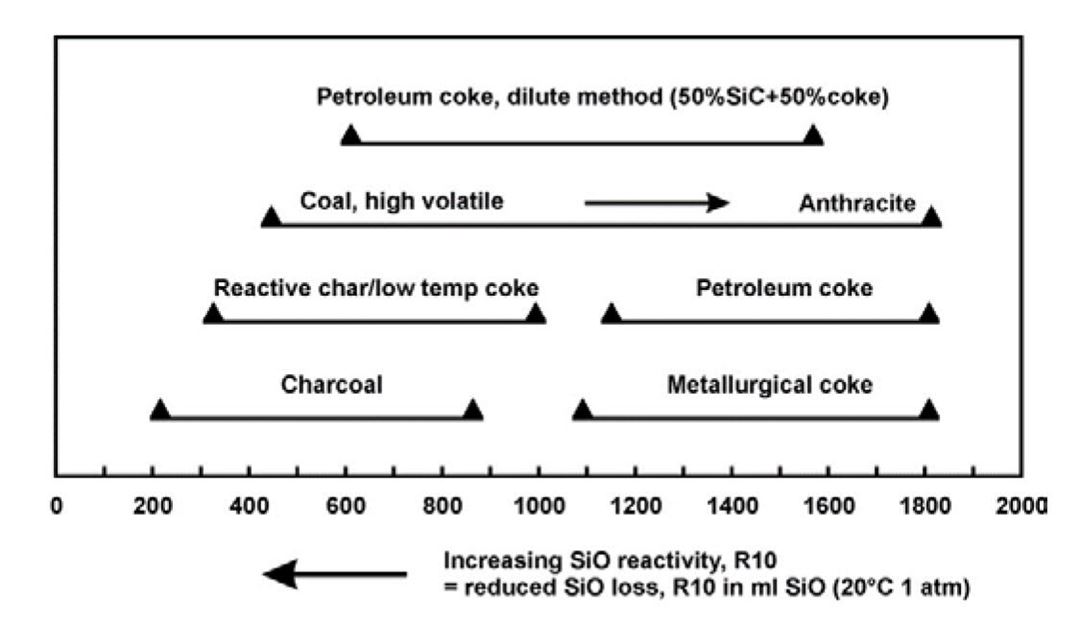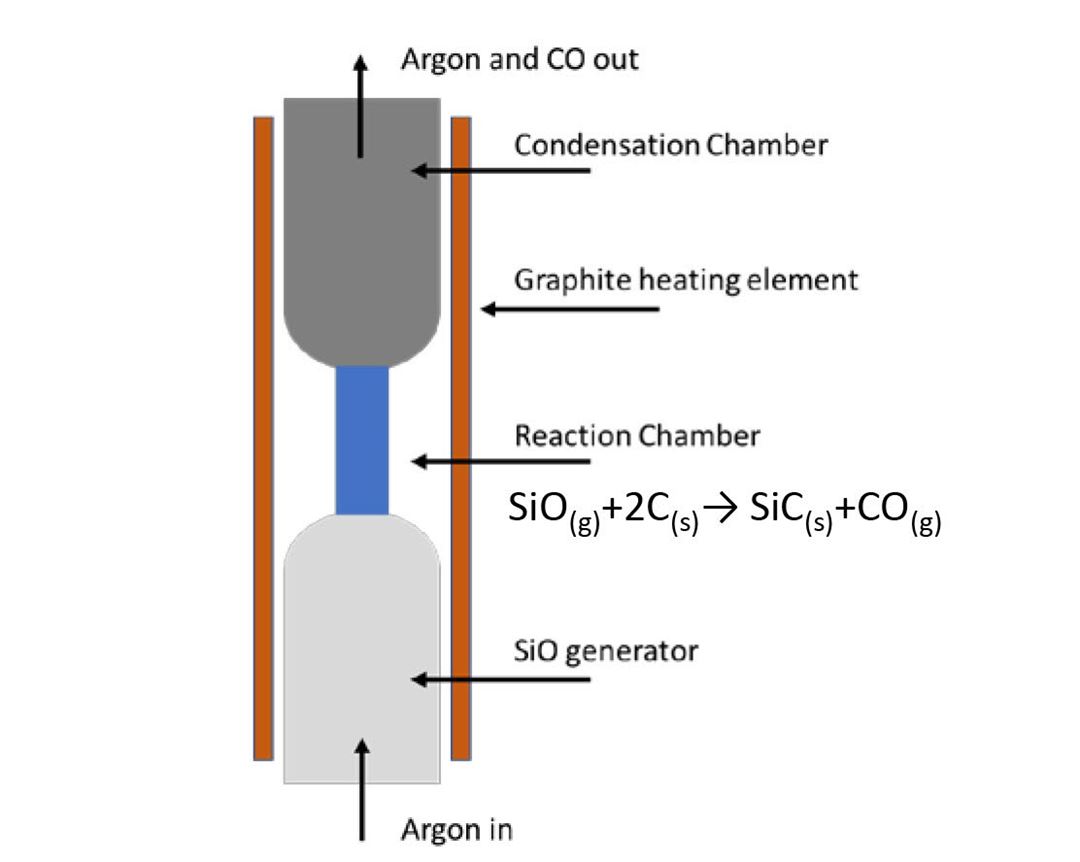Process Metallurgical Laboratories
SiO reactivity test
Contact person
SiO Reactivity and the Furnace
SiO gas is generated in the high temperature zone of the furnace per reactions 3 and 4 below. This SiO gas will travel up where it will react with the carbon to form SiC per reaction 2. SiO that is not captured is lost and results in a lower Si yield.

The ability of the carbon reductant to react with SiO is dependent on the physical properties of the carbon reductant being used. The SiO reactivity test estimates the ability of the carbon reductant to react with SiO gas. The range of previously measured reactivities are shown below.

Measuring the SiO reactivity
Measuring the SiO reactivity is difficult as temperatures up to 1650 °C are required as well as the difficulties imposed by working with SiO gas.
As can be seen by equation 2, CO gas is generated as a byproduct of the reaction between C and SiO. This CO can be used to measure the reactivity of the carbon reductant. The test setup used to measure the reactivity is shown below.
In brief the test is carried out by blowing an inert Ar carrier gas through the SiO generator, which is filled with pellets that will produce a known amount of SiO and CO gas at 1650 °C (eq 3). This SiO-Ar-CO mixture is passed through the carbon material to be tested.
If 100 % of the generated SiO gas reacts with the carbon the off gas will contain 18 % CO. If all the SiO passes through the carbon material without reacting the CO in the off gas will be approximately 6 %. The reactivity is calculated from the time interval where the CO gas is between 18 and 10 %.

The SiO reactivity is given as the amount of SiO in ml that passed unreacted through the reaction chamber. A low SiO reactivity number means only a small portion of the SiO gas passed though the sample without reacting.
A low SiO reactivity number, therefore, means that the carbon material is more capable of reacting with the SiO gas that is generated in the high temperature zone of the furnace. Indicating that less Si will be lost as SiO in the industrial furnace.

